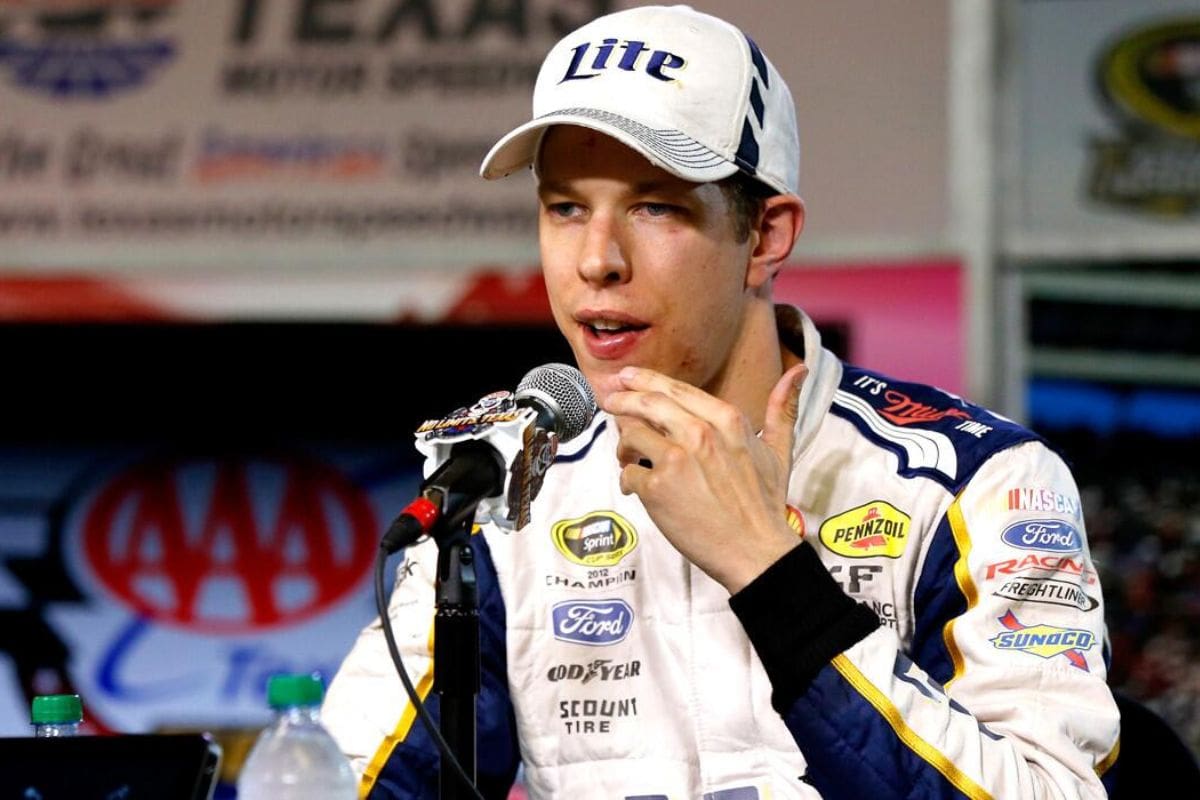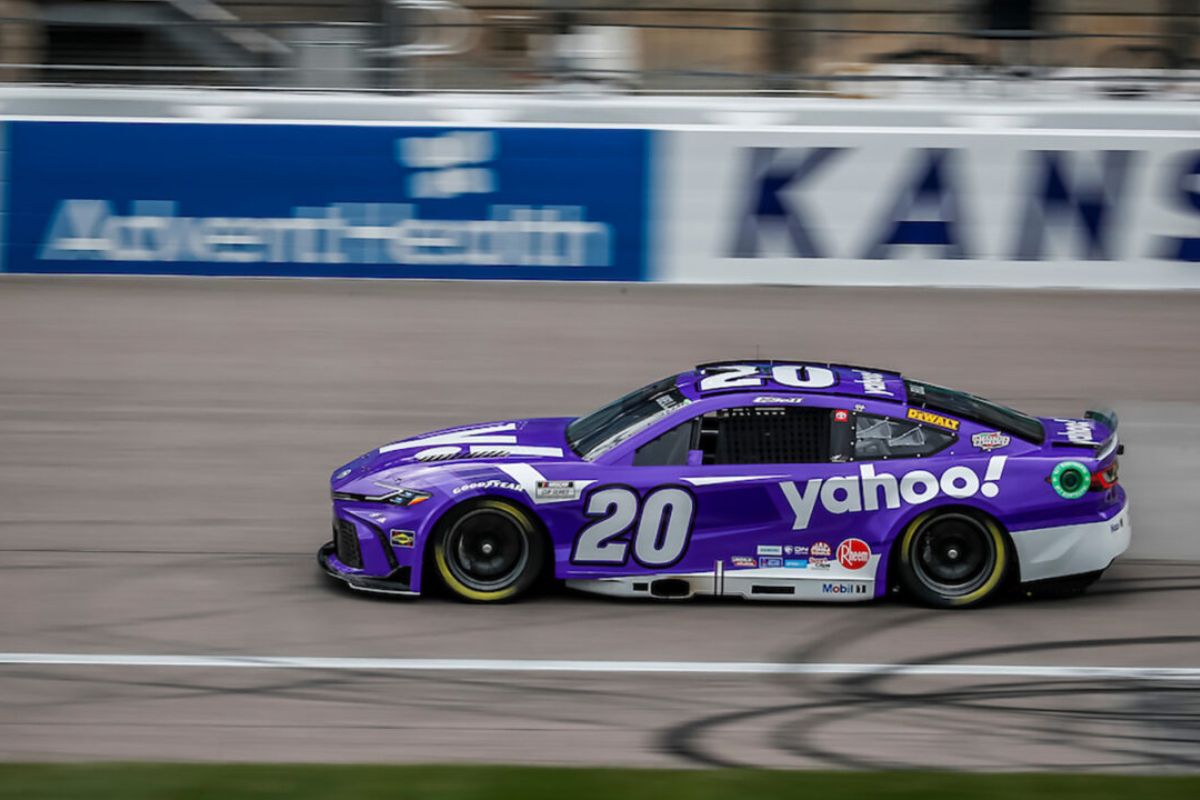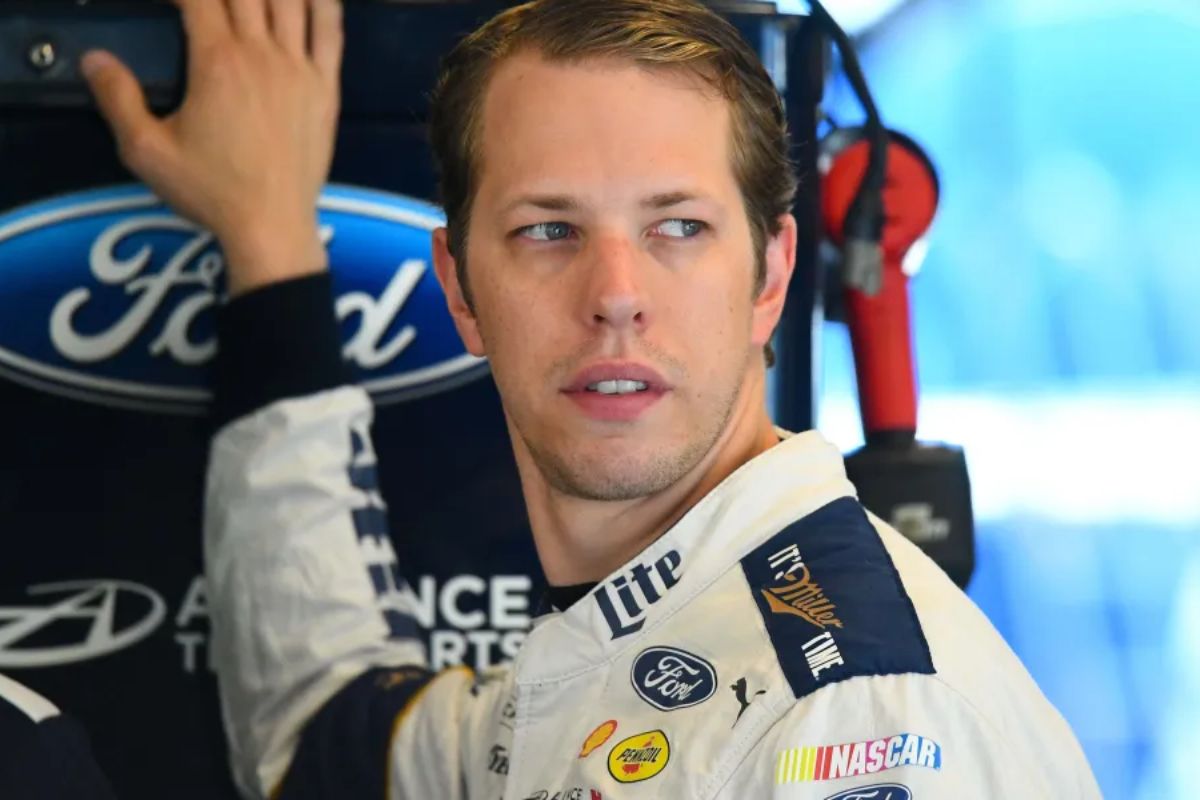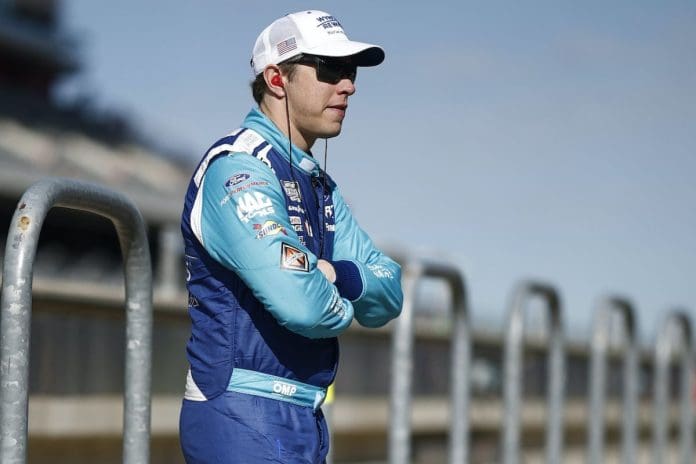NASCAR Refutes Keselowski’s Favoritism Claim: In a recent development within the world of NASCAR, the organization’s leadership decisively countered claims of favoritism made by veteran driver Brad Keselowski. Utilizing a combination of advanced technology, including high-speed cameras and data analysis, NASCAR provided compelling evidence to disprove assertions of biased race officiating. This move not only highlights NASCAR’s commitment to fairness but also highlights the meticulousness of their decision-making process.
Key Takeaways
- NASCAR used high-speed camera technology to ensure a precise and unbiased finish at the AdventHealth 400.
- The virtual finish line overlay provided clear evidence to refute Keselowski’s claim of favoritism.
- NASCAR’s response highlighted their commitment to transparency and accuracy in decision-making.
- Fan reactions and discussions were taken into account to address concerns over fairness in the race’s outcome.
- Jeff Gluck’s analysis supported NASCAR’s adjudication process, emphasizing the sophistication of current technology in resolving disputes.
Race Finish Controversy
The ending of the AdventHealth 400 was tainted by a controversial finish that echoed the disputed outcome of the 1959 Daytona 500, highlighting once again the intense scrutiny under which NASCAR race decisions are made. In this modern iteration, the central figures were Chris Buescher and Kyle Larson, who, much like Johnny Beauchamp and Lee Petty before them, crossed the finish line in a dramatically close contest. The race, crucial for its standings implications, was immediately clouded by ambiguity over the true winner, bringing to mind the historical confusion experienced over six decades ago.
The inspection of the race’s end is indicative of the evolving complexities within NASCAR’s officiating, which now employs advanced technology to aid in decision-making. Despite these advancements, the finish at Kansas has stirred the community, raising questions about the effectiveness and transparency of the adjudication process in tightly contested races. The controversy, thus, is about the immediate outcome of a single race and reflects broader concerns regarding consistency, fairness, and the interpretive nature of rules in motorsports environments.

RFK Racing’s Complaint and NASCAR’s Response
Amidst the confusion following the AdventHealth 400, RFK Racing lodged a formal complaint against NASCAR’s decision-making process, which declared Kyle Larson the winner despite earlier indications favoring Chris Buescher. The issue at hand was not just a simple miscommunication but centered around the physical alignment of the start/finish line, which was not completely straight. This detail played a pivotal role in the final decision, challenging the traditional perceptions and expectations of fairness and accuracy in the sport’s adjudication process.
NASCAR’s response was swift and transparent, aimed at clarifying the confusion and maintaining the integrity of the race’s outcome. The organization provided a detailed explanation regarding the finish line’s positioning and how it influenced the final call. They emphasized that their decision was based on a precise interpretation of the race conditions and existing rules, rather than any preferential treatment.
Furthermore, NASCAR highlighted its commitment to learning from past controversies, such as the notable 1959 dispute, by implementing real-time communication strategies that address misunderstandings immediately. This approach has been developed to foster transparency and trust between the racing authority and its myriad of followers, ensuring that all decisions are justified and justifiable, thus preventing any notions of bias or unfair advantage.
Jeff Gluck’s Insights
Jeff Gluck provides a detailed analysis of Kyle Larson’s dramatic, record-breaking victory, highlighting the intense competition and strategic tactics that defined the final laps of the race. As the laps dwindled down, Larson and Chris Buescher emerged as the frontrunners, engaging in a fierce duel that captivated NASCAR fans. Gluck’s insights bring a deeper understanding of the tactical moves that played out on the track, emphasizing the significant risks and precision driving involved.
“So, I talked to NASCAR, and this line that you see here, I’m not gonna say it’s ceremonial, but it’s not the real finish line.” – Gluck
- The Green-White-Checkered Restart: Larson and Buescher took advantage of the restart, pulling ahead of the pack and setting the stage for a showdown.
- Aggressive Driving: Both drivers pushed their limits, with door-banging action that was both daring and exhilarating.
- Tactical Positioning: Larson’s ability to capitalize on slipstreaming and track positioning was crucial in the last few hundred meters.
- Mind Games: The intense competition and mental challenges between Larson and Buescher added an extra layer of drama to the race.
- Final Lap Execution: Larson’s performance on the final lap, overcoming Buescher’s strong defense, showcased his skill and strategic insight.

NASCAR’s High-Speed Camera and Gluck’s Explanation
In his detailed explanation, Jeff Gluck clarifies that the actual identification of race finishes relies on a high-speed camera, not the traditionally painted white start/finish line. This subtle distinction highlights the evolving nature of race adjudication in NASCAR, where technological integration has surpassed older, more visually-based methods. The high-speed camera system, according to Gluck, is positioned to overlay its own virtual finish line over the track, which is the decisive factor in determining race results.
OFFICIAL: The margin of victory was 0.001 seconds.
That is the closest finish in NASCAR Cup Series history. pic.twitter.com/QbXn0i8H9u
— NASCAR (@NASCAR) May 6, 2024
This system addresses issues associated with physical lines on the track, such as degradation from tire rubber and burnouts, which can alter visibility and precision. Over time, these markings require maintenance that can slightly shift or obscure the actual race boundary, potentially leading to discrepancies in race outcomes based solely on visual cues. By employing a high-speed camera, NASCAR ensures a consistent and unambiguous finish line that remains unaffected by the physical and environmental changes to the track.
The answers you’re asking for about the crooked line: pic.twitter.com/FNH8DpwhGy
— Jeff Gluck (@jeff_gluck) May 6, 2024
“The real finish line basically, it’s the camera down there, a high-speed camera that overlays its own line over basically right here, right? So these lines, because of people’s burnouts, because of rubber build-up, they’re getting touched up on the weekends, you know, over time.”
“The camera down there is overlaying an exact finish line right here, so it doesn’t matter that Buescher, you know… Larson beat Buescher to that line, the exact line. Yes, it is crooked here, but this line doesn’t even have to be here necessarily for that (high-speed camera) to have determined the exact finish line.” – Gluck
The camera’s ability to capture hundreds of frames per second allows for an almost forensic level of detail in analyzing the exact positions of cars as they cross the finish line, ensuring that the declared winner is based on incontrovertible evidence rather than approximations or potentially flawed visual judgments.
NASCAR’s Swift Response and Fan Reactions
Following the release of Jeff Gluck’s explanation about NASCAR’s high-speed camera technology, the fan community engaged in a robust debate, reflecting a spectrum of opinions on the necessity and effectiveness of such measures. The swift response from NASCAR was pivotal in addressing the allegations of favoritism, and this proactive stance was largely seen as an essential step in maintaining the integrity of the sport.
“NASCAR said not today Twitter.”
“Lmao they saw two tweets about that crooked ass white line and got ahead of it.”
“Can you imagine if the NFL or any other sport like that had crocked goal lines or out of bounds, etc, foul territory? Sports has trained us to use visuals not the “trust us our camera got it scenarios.”- fans reaction
- Transparency and Trust: The use of advanced technology by NASCAR in adjudicating races was viewed by some fans as a move towards greater openness and fairness.
- Skepticism and Criticism: Despite the explanations, a segment of the audience remained skeptical about the impartiality of these technological interventions, questioning whether they could truly eliminate favoritism.
- Comparisons to Other Sports: Some fans drew parallels to other sports that use technology to aid officiating, using these comparisons to either support or critique NASCAR’s methods.
- Cultural Resistance: A portion of the fan base displayed opposition, citing a preference for traditional methods over technological solutions, which they argue might detract from the raw and unpredictable nature of racing.

News in Brief: NASCAR Refutes Keselowski’s Favoritism Claim
NASCAR’s prompt rebuttal to Brad Keselowski’s accusations of favoritism exemplifies a rigorous adherence to transparency and fairness. By deploying advanced technological tools such as high-speed cameras, the association highlights its commitment to objective race adjudication.
This approach not only counters skepticism but also reinforces the trust and confidence of the fanbase. The incident highlights the importance of evidence-based resolutions in maintaining the integrity and equitable nature of competitive sports.
Also Read: Brad Keselowski Exposes RFK Racing’s Troubling Weakness


